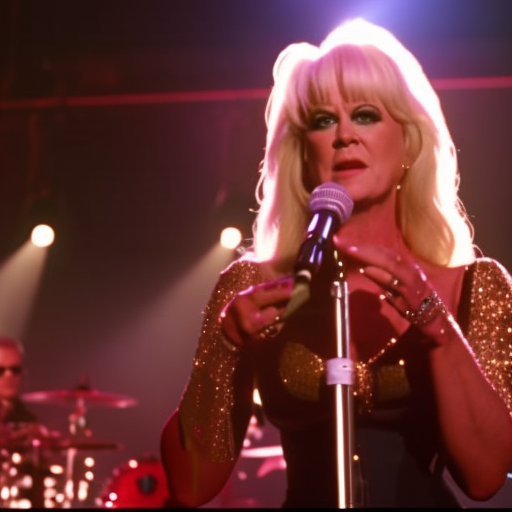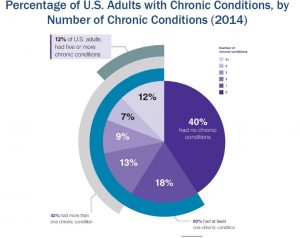
Healing Through Music: Cindy Wilson Releases Second Solo Album
Cindy Wilson, best known as one of the iconic bee-hived glamour girls of pioneering new wavers the B-52’s, discusses her second solo album, Realms, in an interview with Yahoo Entertainment. Wilson describes music as a healing tool that allows her to express herself and grow emotionally. Realms, recorded with producer Suny Lyons during the COVID-19 pandemic, taps into disco and new wave influences while still being a departure for the 66-year-old singer. The release of Realms coincides with the B-52’s farewell tour, marking the end of an era for the legendary band.
Reinvention and Healing Through Music
Cindy Wilson has experienced reinvention and healing through music before. Following the tragic death of her brother and bandmate Ricky Wilson in 1985, the B-52’s made a comeback four years later with their fifth album Cosmic Thing. The album became a mainstream breakthrough, catapulting the band to MTV superstardom. Wilson describes this time as healing and vindicating, as they were able to perform again for their fans.
The Legacy of Ricky Wilson
Ricky Wilson’s legacy was carried on by the B-52’s with the release of Bouncing Off the Satellites, recorded while Ricky was secretly battling AIDS. The band faced a dark and uncertain future during this time, but they decided to give it another go without Ricky. They rented a space in New York and wrote Cosmic Thing, which was a nostalgic look back at their happier times in Athens. The album was a success, and the band had the support of their record company this time around.
The B-52’s: A Creative and Influential Band
The B-52’s have always been known for their creativity and originality. Their unique blend of rock music and creativity proved that rock doesn’t have to be solely about hardcore technique, but can also be about artistic expression. The band received fan mail and messages from people who felt inspired and accepted by their music, especially during a time when the LGBTQ+ community was facing challenges.
Realms: A Timely Release
Realms, Cindy Wilson’s second solo album, comes at a time when her unique voice is needed more than ever. In an increasingly conservative era, Wilson’s music serves as a reminder that it’s okay to be different. She hopes that people will come to their senses politically and recognize the importance of acceptance and unity. Realms is a techno-leaning record that showcases Wilson’s growth as an artist.
The Future of the B-52’s
The B-52’s’ epic story will soon be told in a documentary executive-produced by Fred Armisen. The band’s influence and impact on music and culture will be explored, providing an in-depth look at their history. While the B-52’s are winding things down with their farewell tour, Cindy Wilson is feeling energized and hopes to embark on a solo tour in support of Realms.
SDGs, Targets, and Indicators Analysis
1. Which SDGs are addressed or connected to the issues highlighted in the article?
- SDG 3: Good Health and Well-being
- SDG 4: Quality Education
- SDG 5: Gender Equality
- SDG 10: Reduced Inequalities
- SDG 11: Sustainable Cities and Communities
- SDG 16: Peace, Justice, and Strong Institutions
The article discusses the healing power of music for Cindy Wilson and her bandmates, highlighting the emotional and personal benefits she derives from music-making. This connects to SDG 3, which focuses on promoting good health and well-being. Additionally, the article mentions the B-52’s influence in showing people that it’s okay to be different, which relates to SDG 4 (quality education) and SDG 5 (gender equality) by promoting inclusivity and acceptance. The article also touches on the AIDS epidemic and the loss of loved ones, which relates to SDG 10 (reduced inequalities) as it highlights the impact of the disease on marginalized communities. Furthermore, the mention of Athens as a creative hub and the band’s influence on cultural changes connects to SDG 11 (sustainable cities and communities). Lastly, the article briefly mentions the need for political change and people coming together, aligning with SDG 16 (peace, justice, and strong institutions).
2. What specific targets under those SDGs can be identified based on the article’s content?
- SDG 3.4: By 2030, reduce by one-third premature mortality from non-communicable diseases through prevention and treatment and promote mental health and well-being.
- SDG 4.7: By 2030, ensure that all learners acquire the knowledge and skills needed to promote sustainable development, including among others through education for sustainable development and sustainable lifestyles.
- SDG 5.1: End all forms of discrimination against all women and girls everywhere.
- SDG 10.3: Ensure equal opportunity and reduce inequalities of outcome, including by eliminating discriminatory laws, policies, and practices and promoting appropriate legislation, policies, and action in this regard.
- SDG 11.4: Strengthen efforts to protect and safeguard the world’s cultural and natural heritage.
- SDG 16.3: Promote the rule of law at the national and international levels and ensure equal access to justice for all.
Based on the article’s content, the specific targets identified include reducing premature mortality from non-communicable diseases (SDG 3.4), promoting sustainable development through education (SDG 4.7), ending discrimination against women and girls (SDG 5.1), reducing inequalities of outcome (SDG 10.3), protecting cultural heritage (SDG 11.4), and promoting the rule of law and equal access to justice (SDG 16.3).
3. Are there any indicators mentioned or implied in the article that can be used to measure progress towards the identified targets?
- Indicator for SDG 3.4: Mortality rate attributed to non-communicable diseases
- Indicator for SDG 4.7: Proportion of students achieving proficiency in sustainable development concepts and skills
- Indicator for SDG 5.1: Proportion of women and girls subjected to violence or discrimination
- Indicator for SDG 10.3: Proportion of population reporting having personally felt discriminated against or harassed in the previous 12 months
- Indicator for SDG 11.4: Number of countries that have ratified international instruments concerning cultural heritage
- Indicator for SDG 16.3: Proportion of victims of violence in the previous 12 months who reported their victimization to competent authorities or other officially recognized mechanisms
The article does not explicitly mention indicators, but the identified targets can be measured using indicators such as mortality rates attributed to non-communicable diseases (SDG 3.4), proficiency in sustainable development concepts and skills among students (SDG 4.7), prevalence of violence or discrimination against women and girls (SDG 5.1), self-reported experiences of discrimination or harassment (SDG 10.3), ratification of international instruments concerning cultural heritage (SDG 11.4), and reporting of victimization to competent authorities (SDG 16.3).
Table: SDGs, Targets, and Indicators
| SDGs | Targets | Indicators |
|---|---|---|
| SDG 3: Good Health and Well-being | 3.4: By 2030, reduce by one-third premature mortality from non-communicable diseases through prevention and treatment and promote mental health and well-being. | Mortality rate attributed to non-communicable diseases |
| SDG 4: Quality Education | 4.7: By 2030, ensure that all learners acquire the knowledge and skills needed to promote sustainable development, including among others through education for sustainable development and sustainable lifestyles. | Proportion of students achieving proficiency in sustainable development concepts and skills |
| SDG 5: Gender Equality | 5.1: End all forms of discrimination against all women and girls everywhere. | Proportion of women and girls subjected to violence or discrimination |
| SDG 10: Reduced Inequalities | 10.3: Ensure equal opportunity and reduce inequalities of outcome, including by eliminating discriminatory laws, policies, and practices and promoting appropriate legislation, policies, and action in this regard. | Proportion of population reporting having personally felt discriminated against or harassed in the previous 12 months |
| SDG 11: Sustainable Cities and Communities | 11.4: Strengthen efforts to protect and safeguard the world’s cultural and natural heritage. | Number of countries that have ratified international instruments concerning cultural heritage |
| SDG 16: Peace, Justice, and Strong Institutions | 16.3:
Behold! This splendid article springs forth from the wellspring of knowledge, shaped by a wondrous proprietary AI technology that delved into a vast ocean of data, illuminating the path towards the Sustainable Development Goals. Remember that all rights are reserved by SDG Investors LLC, empowering us to champion progress together. Source: yahoo.com
Join us, as fellow seekers of change, on a transformative journey at https://sdgtalks.ai/welcome, where you can become a member and actively contribute to shaping a brighter future.
|







